The Mess is over for this year. We experienced three days full of memorable moments and I intend on sharing a few with you. But… Writing music reviews isn’t really my thing. Also, music is more subjective than any other form of expression. This is why I’ve always thought writing bad reviews when music is concerned is most of the times a wasted effort — when it’s not about a mere technical aspect, that is; but seriously, who writes technical reviews anymore?
First of all, words must be spent on Reykjavík Music Mess organization. All organizers, working together nonstop, really managed to conjure a great event. The schedule was very carefully programmed; the few foreign artists were wisely selected — in this, I reckon Reykjavík Music Mess was a lot more successful than other famous festivals that aim at booking very insubstantial acts just for the sake of temporary hype. Foreign acts are not that common around these parts lately, but Iceland’s music scene can benefit enormously from a smart direct interaction with music coming from abroad, both in terms of creative input and in terms of know-how. I said all organizers are to be praised for the hard work of these weeks. However, Baldvin of Kimi Records was the man that made this event possible. Bradford Cox, closing with his Deerhunter this year’s festival, must have thanked him at least four or five times — and in case you haven’t noticed before, bands usually don’t do that on stage. Yes, Baldvin owned everybody and we are glad he did.
Realizing from the start we wouldn’t be able to attend every gig, as we all know ubiquity pills have not been invented yet, the partner in crime and I selected as many shows as we could from the very rich festival’s program. Among the live acts we attended, more than a few performances really struck a chord. About those I will have a few awkwardly useless words, so beware.
Lotsa laughs and merriment came from the festival’s openers, Prinspóló. In the brief allotted time they managed not only to warm up the audience, but also to tell absurd pizza-themed jokes and to sir — to knight, that is — a young fella named Bjargmundur — moments later employed at turntables by Samaris: he sure enjoyed his newly conquered sirhood and cardboard crown coming with it. Besides being capable musicians, Prinspóló confirmed themselves as top-notch entertainers. Ahoy.
Nive Nielsen was the big name at the Nordic House on day one. Nive is an enchanting lady, with a beautiful alluring smile and eyes so bright with life that if you stare at them for too long they can make you feel dizzy. That she and her band, The Deer Children, like quite a lot to play their music, we could clearly see and hear on Friday. They put on a show worthy only of true professionals. The guitarist — should I call him Deer Child? With that intense moustache, I feel stupid referring to him thus — of the band, Filip Wauters, deserves a special mention for his awesomeness.
Sóley is one of the music artists I never tire of. Every time I attend one of her solo shows, I am totally bewitched. Sóley’s music retains the intricacy of a little theatrical piece where the songstress, in between sleeping and waking, intones a subtle conversation with her imagined shadows. The collected poise on Sóley’s face and the tangible emotion as she played, felt like interwoven fibers in a curtain hiding a door to a Burtonesque dream, a secret place where hopes and disquiet move about restlessly. Sóley is not your average Icelandic female musician: she creates drama just with a few well-considered touches, without the need for any superfluous music jargon — which may seem a contradiction, coming from a trained musician like her. I am sure critics talking about other local popsters as the next big thing from Iceland, without being able to realize what a preciously unique artist she is, are fooling themselves or are just too lazy and unimaginative.
AMFJ is probably the biggest discovery of this Reykjavík Music Mess for me. I had known the musician from recorded material for some time via gogoyoko, but in a live format Aðalsteinn Jörundsson is totally mind-blowing. I had a terrible headache on Saturday, but I forgot about it in no more than three minutes as soon as the music started. AMFJ’s performance was of a mighty sublimity, well beyond music standards and boundaries, stark and epic at the same time and definitely out of scale and proportion for the sleepy Nordic House. The partner in crime was also totally impressed and he said the next big thing for him will be playing Canabalt to AMFJ’s music — he suggested doing the same to all his game developing acquaintances already and maybe you should try it too.
I’m a worshipper of Jan Anderzén’s Kemialliset Ystävät — Tomutonttu is his moniker as a solo artist. Reason why Tomutonttu’s was one of the acts I was highly anticipating. The experience was so totally pervasive that it felt almost as if an audible compendium to Anderzén’s mind-bending visions had been injected into the audience’s Eustachian tubes. Baffled faces were evidence dude’s too experimental even for trained crowds. I spaced out for a moment there, then I remembered I was supposed to take photos. Everybody was sort of dumbfounded at the end, when the music faded out. I hardly noticed myself when Anderzén was walking out after murmuring a simple thank you to my own irrelevant appreciative remark. I am sorry I couldn’t express my admiration properly, darn.
Due to the fact I was at the Nordic House for Tomutonttu, I missed part of Borko‘s concert on Saturday — luckily, I made up for this on the next day, at his Bríarí’s off-venue’s gig. Borko is such a peculiar and idiosyncratic character, unusual even for Icelandic standards: he has this great and vaguely wacky sense of humour that you can perceive at all times; all of a sudden he transfigures to his performing self, intense and captivating. You may think Borko is pulling your leg, but the two sides of his persona are only apparently in contrast: as two sides to the same coin, they’re aspects of the same artistic honesty.
In the same league as Borko and Sóley and equally pleasing in the live format, I’d put Sin Fang. When I am asked why I go to his concerts every time, I reply I simply have to. Sindri is not an histrionic artist. He is a devout follower of stage subtlety and his lyrics are even subtler than his stage antics. Besides the catchy melodies, there is a whole strange world, a bizarrely warped synthesis of hallucinatory childish turmoil and adult maudlin sentimentalism. There is a lot to dig into. Either you get him or you don’t. It’s useless to ramble on and on about Sindri’s lack of expressive poignancy: it’s all there. Catching glimpses of it on stage is a truly thrilling experience. If you can’t perceive it, it’s probably your problem, not his.
Lower Dens were appropriately sandwiched between Sin Fang and kimono — I don’t know how many other acts could have been up to the task of not losing face to them, so cheers to the organizers again. Lower Dens were one of the strongest presences at Reykjavík Music Mess 2011, one of those I sincerely enjoyed the most. As a whole, the band has all the right numbers: both their sound and song crafting is powerful, stirring, almost teasing, without resorting to the usual dirty tricks of the trade. The band’s true star is undoubtedly Jana Hunter: she, like only a handful of other female musicians worldwide, is more of a music hero than many of her male colleagues. But quite simply, she’s beyond the male/female music artist dichotomy. Just looking at her minute figure on stage, deeply concentrated and at ease with her guitar at the same time, makes you realize what is real stature and nerve for a performer worthy of respect. In this case too I would have liked to express properly my appreciation, but I couldn’t.
kimono were so kickass I wouldn’t know where to begin to put their kickassness into words. See, I’m even making up words, because words fail me — but no, apparently kickassness is a Urban Dictionary approved word, phew. If AMFJ made me forget I had a headache on Saturday, kimono made me forget I had previously forgotten my headache. Basically, they made my head implode, so that I totally forgot I had a head to begin with. My camera imploded too, which is why I couldn’t take any more pictures that day. Pretty cool, uh? The good about kimono, apart from their absolute coolness and whooping awesomeness of the music in itself, resides in their apparent carelessness for the senseless routine approach of many experienced musicians: reason why every show is as piercing as the previous. Gotta find myself a new head when I see them next time.
On Sunday Kippi Kaninus, AKA Guðmundur Vignir Karlsson, opened at NASA. The crowd was sparse, but definitely absorbed. His lulling atmospheres, in a multiform richness of sounds to get lost into, were an excellent beginning to the long night. When with such an unfortunate placement you manage to capture your audience’s attention like he did with his band, it’s sign you have class. The partner in crime started daydreaming about rabbits, which is also undeniable sign of greatness.
A certain balance to the otherworldly ambiance created by Kippi Kaninus was once again established thanks to the advent of Sudden Weather Change. From hi-tech dreamy hybridization to rugged, stormy and down-to-earth sounds. It was quite a leap! These fellows seriously harm my mental health though. In a good way, I must add: I feel so old and demented when I look at them. Alas, blessed youth.
Final comments of this long, long entry go to Deerhunter. As it was expected, Atlanta-based Deerhunter proved to be the prodigious headliner everybody was looking forward to — evidence that even those stuck-up hipsters at Pitchfork can rightly promote deserving music once in a while. Like it or not, Deerhunter are one of the latest successful expressions of the fact it doesn’t simply take musical education, a laptop, and hiring eight session players to fill the gaps here and there to be an accomplished musician. They’re also expression of the fact it’s asinine to think of becoming the next Thurston Moore just by taking pictures of guitar pedals setup and bringing them to the closest instrument store, purchasing and connecting all those fancy effects as they were Lego blocks. Reaching that level of skill takes an inner motivation which resents any shortcut; it also requires hours of passionate tinkering and an ultimate obsession with the instrument at the expenses of anything else. Besides any sterile taste considerations, this is what makes Deerhunter what they are and this is what made yesterday’s concert a glorious display of oozing noisy goodness, bottle/finger innuendos and instigation to social disconnection, a capital end to this year’s Mess. Being able to keep the crowd in your power — not the drunk, but the sober crowd — almost without resorting to spoken word and without any ridiculous pretension of greatness is not easy. A small crater of fatigue had opened during the three-day event, keeping me constantly on the edge: Deerhunter filled it to overflowing point. I’m glad I’ve grown out of fangirlisms, because the lost teenager in me was sincerely shaken. By the time Cox was murmuring the first verse of Agoraphobia straight into the mike during the encore, I had almost lost track of time, as if the past three days had been one long moment. Bradford Cox‘s sung monologues and guitar feedback will ring on in my head for a long time.
Now for the visual account all scattered about… Let me have a brief clarification: I, for one, find on average music photography very boring. The live photographer is usually a professional without any connection or particular feeling for the music; he/she takes distracting pictures of people playing instruments, not even taking the time to carefully frame the subject, sometimes letting an expensive camera do all the work abominably abusing of auto focus and flash, not caring in the least to convey any particular feeling, apart from coolness at the most. Well, I try a different approach, also because I am not forced to end the day with x number of photos to sell. I think music photography shouldn’t be a slave but instead a visually compelling companion to the music, something that, like a song, will be interesting even in a five year time. I try to give an interpretation of the atmosphere musicians create on stage, instead of simply illustrating the event in a plain fashion. Illustrating can be OK today as a transitory form of visual information, but it won’t tell anything about the emotions of a live performance tomorrow or the day after. Of course, this is my take on the subject and everybody is free to prefer objectivity.
And now I think that’s all, folks!
Photos ©Pu the Owl. Wanna use them anywhere? Ask for permission nicely. Steal and be sure the curse of the demonic motorbiking puffins will befall you.


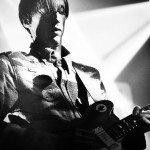
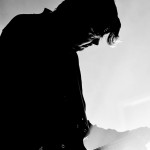

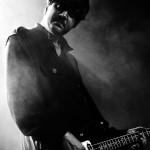


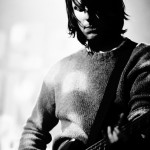


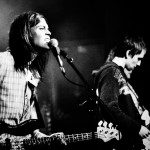
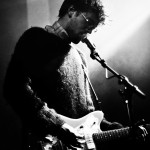

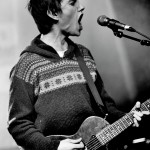

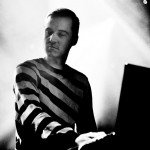
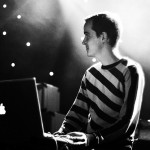




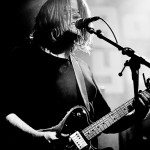
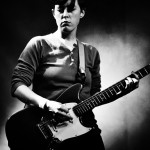


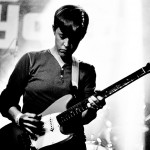
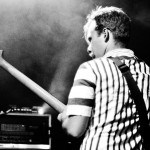
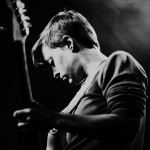

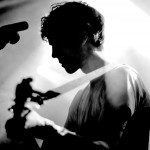
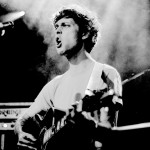

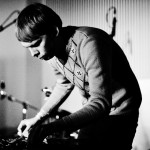





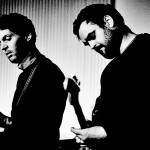



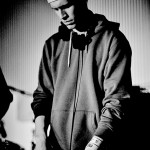

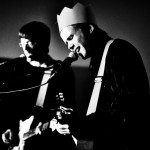


Good to know Iceland is getting its international fame back with events like this festival!